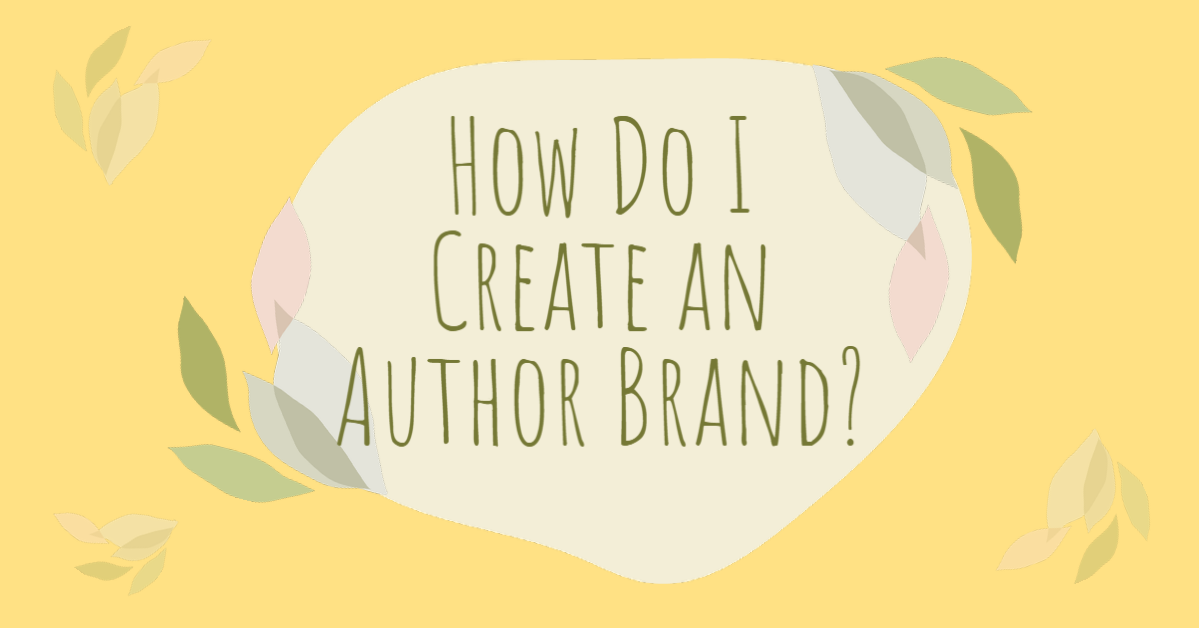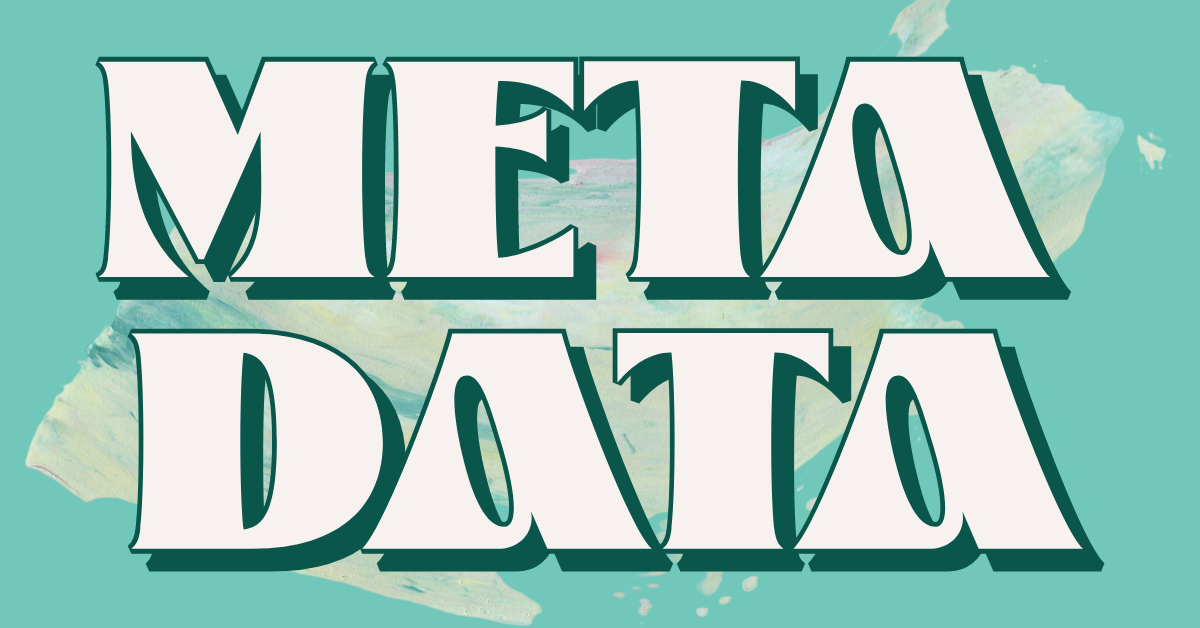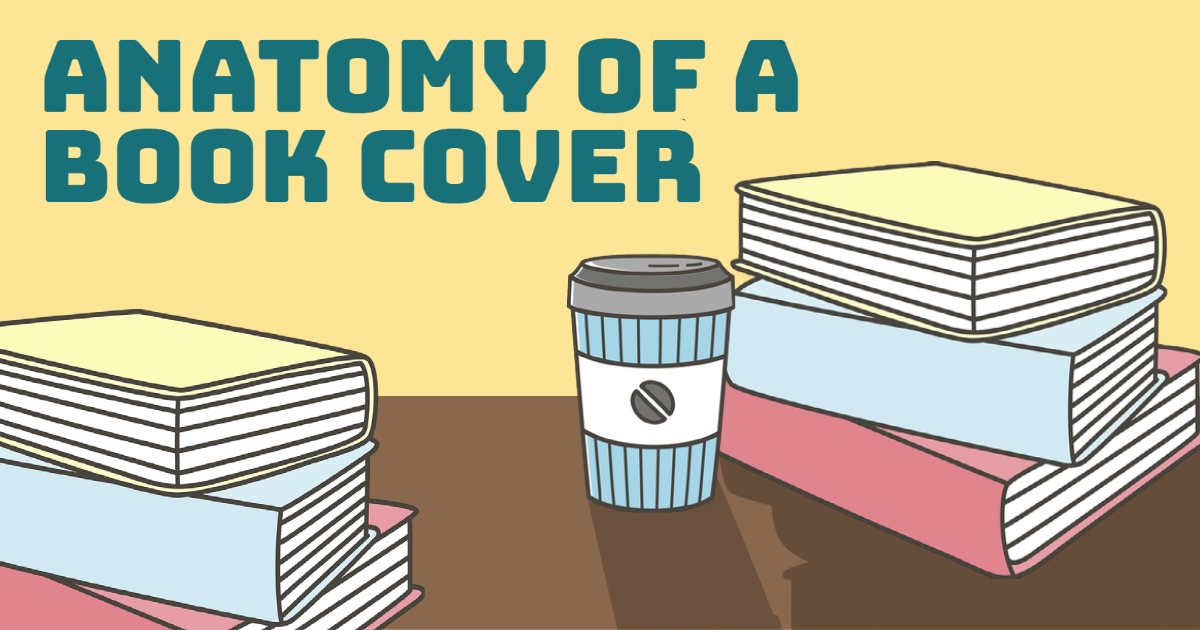|
In an earlier blog I discussed creating your author brand, now it’s time to put that brand to action and apply it to your photography. As you know, branding is much more than just a logo, colors, and fonts, it also includes the photos you post on social media, use on your website, or print on promotional materials.
What is brand photography?
Brand photography is a collection of professional images that represent you as an author visually, and fit with your visual identity through their use of colors, tone, props, sets and more. These can include photos of you, your book, your writing space and other things that make you unique. To make you and your book look their best, you’ll want a range of consistent, well-crafted photos that properly represent your voice across all of your marketing materials.
Brand photography sets your first impression
People form a first impression in just 50 milliseconds, so everything you share has to wow and do it fast! Good quality, consistent, professional brand photography is going to help capture potential readers in a flash as they’ll see that you appreciate attention to detail, high quality content, consistency, and great aesthetics.
Brand photography increases engagement
We all know by now that visual content goes a long way and has a much better engagement than text-only content, and if you’re not convinced yet, here are some cold, hard facts for ya. 65% of marketing execs say photos, videos, illustrations, and infographics are key to communicating your brand story; Facebook posts from brands that included images earned 87 percent of all engagements; tweets with images receive 150% more retweets than tweets without images; articles with an image once every 75-100 words received double the social media shares as articles with fewer images; Facebook posts with images see 2.3X more engagement than those without images. (Hubspot) You need images and more importantly, you need good quality, on-brand images.
Consistency is key!
You might have your logo, colors, and fonts down, but if your photography doesn’t match, you’re in trouble. Having all of your visual elements work together cohesively is vital in maintaining brand consistency. Brands that are consistently presented are 3 to 4 times more likely to experience brand visibility and 90% of consumers expect their experience to be consistent across all channels and devices used to interact with brands.
Stock images
Now you may be able to find some good stock images that kind of work but chances are they aren’t quite on-brand. Stock imagery is good when you’re first starting out, and I still use them, but it should be the goal to have your own, unique and perfectly on-brand photos to use instead. When using stock images I recommend filtering your search to ‘undiscovered content.’ That way you are using images that have barely or never been downloaded and are more than likely to avoid using a photo another author has attached to their website or social media.
Where you can use brand photography
I get that maybe you’re wondering where you could possibly use all of these photos and you’ll totally want to get your money worth if you’re investing in a photographer, so here’s a few ideas for how you can use these images once you have them:
• As your social media profile photos, especially if you’re a team of one, or your brand is really personal, like being an author. • For Instagram photos • In your Instagram stories • To show who you are on your about page • In blog posts • As the graphics for your paid ads • To show your process • As the sign-off of your email newsletter alongside your name The options are endless!
1 Comment
I never thought I would say this, but middle grade is a pretty awesome time. At that age kids have outgrown picture books and easy readers but aren’t yet mature enough for young adult topics. They are discovering themselves and what interests them, and they are ready for a little bit of adventure. As a middle grade author, you are inspiring young readers and helping develop their interest in reading more. So how does a middle grade author grab the attention of 8-12 year olds so that they will read their book?
You don’t . . . (well, not at first. Just hear me out.)
You grab the attention of their parents, guardians, librarians, and teachers. These are the gatekeepers, the ones who make the purchases, who are on social media, and who ultimately make decisions for your target reader.
Have an online presence
With that in mind you want to tailor your online presence to catch the gatekeeper's eye. Use your social media wisely, promote your book, but don’t ONLY promote your book. Teachers and librarians aren’t only focused on books, but also on bettering the community. There’s a 20/80 rule where an author should use their online presence 20% of the time to promote their book and 80% of the time offering useful content like writing tips for writers of all ages or sharing links that are helpful to teachers and librarians. Talk about your writing process and other things that they can share with their students that can inspire them to want to give writing a try. Have giveaways geared towards educators that will get your book into their hands. Who doesn’t love free stuff?! Also, pay attention and respond to comments by the teachers and librarians, this will help you to connect with them and can lead to more personal ways to promote your book.
Get out there!
Once you have connected with the gatekeepers, you now have the opportunity to connect directly with your readers!
School and library visits are a wonderful way to engage with MG students. This can be done virtually or in person, and it’s your opportunity to feel like a celebrity! Them getting to meet the person who ACTUALLY wrote and published a book can be very inspiring and this will make them want to read your book even more. When you do go to in-person events, have something to give away, like bookmarks or lapel pins, something that the student can take away and be reminded to read your book. Again, who doesn’t love free stuff?! It can be scary to speak publicly but it is such an effective marketing tool. If public speaking isn’t your thing, make videos that you can share with teachers to show their students. Just get yourself out there in some way shape or form. Channel your inner Spielberg (or hire someone to be your Spielberg)
Speaking of videos, another great way to connect with your reader is to create a book trailer. Let’s face it, we are all visual creatures, especially at that age. A book trailer can be a fun way for the parents and other gatekeepers to show MG readers how exciting your book is and pique their interest.
Just Be Yourself
Finally, just remember to have fun! Kids are very honest critics and they can tell when you are not in your comfort zone. You want to be authentic. If sprinkling jokes in here and there isn’t your thing, have some interactive games for the kids to take part in. Do what makes you feel comfortable, this will build trust between you and your potential reader.
by Michael Hardison
Your book is written, it’s in production, and you are waiting for its release with bated breath. So, what do you do in the meantime? The short answer is . . . a lot. Writing your story is just the first of many steps in getting your book on the market and into the hands of readers. One important element to work on during this time is creating and building your author brand. Let’s touch on the main points of building your brand.
What is an author brand?
Your brand is how you represent yourself and how readers and industry professionals perceive you. It’s a mix of your personal and professional values, interests, and skills. Ultimately, your author brand is what people think of when they hear your name or see your book out in the wild.
How do I define my brand?
Step 1: Define Your Target Audience
Knowing who you are writing for will make it easier to know how to talk to your ideal readers. You want to present yourself in a way that connects to your readers, whether that is through the way your website is designed or how you talk to them. You want your readers to find you relatable, that way they want to follow you throughout your writing career. Step 2: Define Your Style Guide The main goal in having a style guide is to remain consistent. You want your reader to know that it is you when they visit your website or see a post on social media. Your style guide can be kept to a simple document, with a few key elements: • Your color choices • The fonts you use as headers and text • How your logo (if you have one) can be used in different settings I recommend looking up other style guides for examples as you create your own. Be sure to share your guide with anyone who will be helping you with marketing your brand and your books. Step 3: Define Your Content Again, consistency is key. Your content should be consistent with your brand. When a reader visits your website/blog/social media, you want them to know what to expect. People find comfort in the expected. If your posts are all over the place, your following will not stay for very long. Think about how many times you have followed a content creator for a specific reason and once they derail from the expectations you have of them, you click that unfollow button. No one wants that. Decide on what your voice is and stick to it. Post what you are passionate about, people can see right through you when you are just posting something simply because it is trendy. And when you do make a post that aligns with a current trend, make sure that it is clear that the post still aligns with your voice and brand. Now what?
Now that you have your author brand defined, it is time to project your brand across all platforms that you are using; this includes your social media, website, and emails. Are you doing anything with local or national press? Follow your branding guidelines. Are you going on a blog, vlog, or other media tour? Follow your branding guidelines. Just get out there and represent yourself the way you want people to perceive you. You got this! You know who you are and what you want to accomplish, so let’s make it happen!
Finally, there is one major note I want to share with you. You are going to evolve, as a person, as an author, and as a social media presence. During this time, your author brand will evolve, too. So don’t feel like what you pick now as your style and content is what you have to be for the rest of your writing career. Don’t stress while you are figuring out your brand, and if you need help developing your author brand, ask for it. If you are working with a publisher, chances are they will be more than happy to assist you through this process. A sound author brand can lead to a successful author, and that’s what we all want in the end. by Michael Hardison
1.72 trillion. That’s how many photos are taken every year! That’s 4.7 billion a day! 95 million of those photos are posted to Instagram per day, and we share 1.3 billion photos daily on Instagram alone. Is your head spinning from these numbers? Because mine sure is! In this vast sea of imagery, how do we get the pictures you take noticed and shared? There is no golden answer for this, but with these tips I am about to share with you, you will be on the right path.
Tip 1: Wipe off your camera lens!
Chances are you are using a smartphone for your pictures and your phone has been handled quite a bit. It’s very easy to smudge your lens, and cleaning it before taking photos will guarantee that your photos will not appear foggy.
Tip 2: Remember the rule of thirds.
As Adobe puts it, “The rule of thirds is a composition guideline that places your subject in the left or right third of an image, leaving the other two thirds more open. While there are other forms of composition, the rule of thirds generally leads to compelling and well-composed shots.” Recognizing and utilizing this rule becomes easier the more photos you take, but until then, enable the "grid" on your smartphone camera to make this easier to follow.
Tip 3: Before you take your photos, tap on your subject.
This will let your camera know the focal point of your photo and ensure a sharper image.
Tip 4: Check your lighting.
If you are using natural lighting or a light ring, be sure to check where your shadows are being cast. If you are taking pictures outside, the “golden hour” is ideal. This is the hour before sunset, and you can get some pretty great pictures using this natural light source.
Tip 5: Take multiple photos from different angles.
By doing this you will give yourself different options when selecting your photo to post. Straight on images don’t always work and can lack character depending on the subject. Be adventurous with this, if it doesn’t work out, just delete it.
Tip 6: Negative space is a good thing.
According to Adobe, “Negative space photography is related to minimalist photography. It emphasizes not just the subject, but the empty space around the subject. The viewer's eyes may be drawn to a central figure, but they can't help noticing the large section of emptiness that surrounds and defines that figure.”
One mistake people commonly make is to zoom in on their subject so it takes up most of the space in the photo. But this can be jarring and unappealing to the viewer. By using negative space, you call more attention to the subject of your photo. With these tips you will be off to a great start. Now let your creativity free and have fun! Happy photo-shooting! written by Michael Hardison
The definition of metadata is quite simple: it’s any data that describes your book—including title, subtitle, price, publication date, ISBN, and any other relevant information that readers use to find your book when searching online or in a database. Metadata is critical to the success of the marketing and distributing your book, and it should not be glossed over or ignored.
Let’s go down the list of metadata and briefly explore each of them.
Title
This is the title of your book, including subtitle. Keep it fewer than 80 characters long so that it is mobile friendly.
Contributor(s)
This includes all names of those involved in the project that are on the cover or title page. Be consistent with spelling, middle initials, etc.
Contributor(s) bio
Keep this under 250 words for each contributor. Avoid adding external links that could drive customers away from purchasing your book.
Series
If applicable, include the series name and number so that your readers are aware of titles in the series
Description
In 200 to 600 words, describe your book in a conversational tone. This is probably the same as the synopsis you have on your back cover.
Genre
Choose 2 to 3 BISAC subject codes that are specific to your book’s genre. Be careful when choosing general genres like “drama” because many bookstores categorize plays as dramas. Choosing the wrong BISAC codes can make your book harder for your intended audience to find.
Keywords
Choose 7 or more keywords and phrases that will draw the consumer and describe your book. These are hidden online search items that will help your book be found, so be specific when choosing your keywords.
Format
This is the description of the book binding, is it a paperback, hardcover, e-book? A combination of these? Include all formats and be sure to use one ISBN per format to keep them distinct from one another.
Review quotes
If applicable, include 2 to 8 positive reviews of your work. These reviews can come from industry sources, publications, and relevant people such as other authors and reputable bloggers.
Audience
Is your book for the general adult market, juvenile (age 0 – 12), or young adult (Age 12-17)? Make sure you choose your correct audience and that your BISAC codes are chosen from the audience selected.
Age and grade
If your book has a juvenile or young adult audience, pick an age and grade range to target the appropriate audience for your book. If you do not know your target age and grade range, a simple search will direct you to readability meters where you can cut and paste a portion of your text to see what grade and age range your book falls under.
Publishers take metadata very seriously, and so should you. If you are self-publishing, I leave you with one very important tip: don’t rush compiling your metadata! I know you are excited to get your book out into the world but take your time choosing the proper keywords and subject codes. Metadata is a most often times forgotten key to a book’s success!
We all grew up hearing the old adage, “Don’t judge a book by its cover.” That makes perfect sense when that “cover” is a person you know nothing about. But in the book publishing world, this piece of advice couldn’t be farther from reality.
When you’re in the bookstore, real or virtual, what initially draws you to learn more about a book? The cover, of course. But to create a compelling cover, you must first know what pieces make up the cover's anatomy. Don’t worry, this is a lot less bloody than health class . . . well, unless you're designing covers for Stephen King.
Front cover
The front cover is where you want to capture your reader. This can be done by choosing fonts and imagery that best represents your book. Your book cover will need to include the title, subtitle (if there is one), and bylines. You can also add an endorsement blurb if you have space.
I can’t express enough how important typography is in cover design! When choosing a font, take into consideration what genre your book is categorized under. For instance, you don’t want to design a children’s book using fonts that would be found on the cover of a legal drama. And you want a font that is legible at a glance. Just as importantly as font choice, you want to pick imagery that will attract your reader while conveying what your book is about. You’ll want to choose imagery that leaves space for your title to be seen clearly. Especially since your cover will be seen in all sizes from a thumbnail on a website to poster size at your meet and greets. Back cover
Your book has attracted a reader and they have picked it up and flipped it over. Great! On the back cover, you want to have a book description that doesn’t give away the entire story but draws the potential reader to want to purchase it and begin reading.
You have options on what else you would like to include, depending on space remaining. For instance, you can include a short author bio and author photo OR you can add an endorsement. You will also find the barcode and publisher imprint (if applicable), usually in the bottom quarter of the cover. Spine
The spine should never be considered an afterthought. I have been told in the past that some bookstores pick books based on how compelling the spine looks, because they shelf their books spine out. Here you want to have the author’s name and the title of the book. If there is a publisher, you will also want the publisher’s imprint (logo) in this space. Traditionally, spines are designed with the author’s name at the top, title in the center, and imprint at the bottom.
These three elements will be found on paperbacks and casebound hardcovers. Books with dust jackets will have a similar anatomy, but they will also have jacket flaps (the folded part of the dust jacket that wraps around the hardcover). With dust jackets, you have more space to spread out the descriptive text of your book. You can move your endorsements to the back cover and reserve the jacket flaps for the book description and/or a lengthier author bio.
So there you have it! The basic anatomy of a book cover. When designed correctly, the cover becomes an invaluable tool for promoting and selling your book! It is the branding of you and your story. The more professional your book cover is, the more seriously you are taken by readers. Just remember, in this case, the reader does judge a book by its cover! written by Michael Hardison
Until late 2007, hashtags were just one of the buttons you never used on your phone. Then people started to use them to categorize social media posts, and a new way of reaching your target audience was born.
Social media is completely saturated with influencers and people vying for attention. It can be hard to stand out! That’s where hashtags come into play. Hashtags help people organize how they browse through social media apps and indicate to viewers what kind of post they’re looking at.
So, what makes for a great hashtag? Here are some tips that can help you reach your audience and hopefully up for interaction and followers . . . if the dreaded algorithm doesn’t play against you. Keep it simple
Pick hashtags that are short and straightforward. If you’re a Tumblr user, you might be familiar with their rambling hashtags that one should read as part of the post (like #justkidding #whywouldtheywriteitlikethis #helpimtrappedinmybroomcloset, etc.). Other social platforms like Twitter and Instagram do not use hashtags like this. Instead, you’ll want to keep the hashtags simple.
Keep it relevant
Your hashtags should be true to the post you are making. For example, don’t use #PrideMonth just because you’re making a post in June, which is Pride Month. That post will need to be related to queer culture or a Pride Month event for that hashtag to be relevant.
Do your research
Look up hashtags before you use them. If the hashtag has been used a lot, your post may get lost in the mix of everyone else who is using it. An example of an overused hashtag is #outfitoftheday, often abbreviated as #ootd. Fashion influencers may still use this hashtag, but they don’t expect a huge impact from this hashtag alone.
Use trending hashtags
A hashtag’s popularity will come and go. But how do you know which ones are currently hot? Thankfully, there are sites out there that will do the work for you, like hashtags.org or best-hashtags.com. At hashtags.org, you can enter a hashtag and see how it has been trending. At best-hashtags.com, you can look up a hashtag’s popularity, and you can even cut and paste hashtags from that site into your post. Just remember to edit and add to this list and use only the ones that are relevant to you.
Limit your hashtags
Instagram allows you to use up to 30 hashtags per post. If you exceed 30 hashtags, Instagram will post your photo without any text or hashtags. You’ll have to retype your whole caption, which sucks! (Trust us, we’ve been there.) On Twitter, you only want to use one or two hashtags that can be worked organically into the post, so make sure they are relevant. On TikTok, you’ll want to use only 4-5 hashtags.
We’ll go into deep dives later about how to use hashtags uniquely on each of these platforms, but this is a great starting point! With these tips you will be on the right path to reaching your target audience. So, get out there and engage, and before you know it, you will be reaching your audience, and your following will grow! |
How Do I Book?We'll try to find the answer to that question in our blog. Archives
August 2023
Categories
All
|
||||||








 RSS Feed
RSS Feed